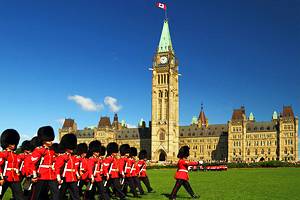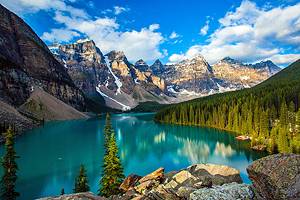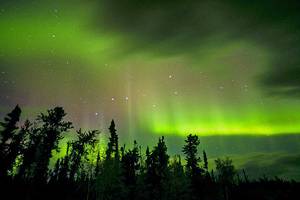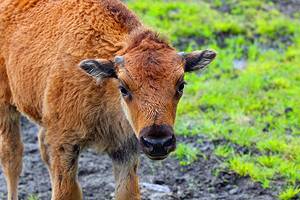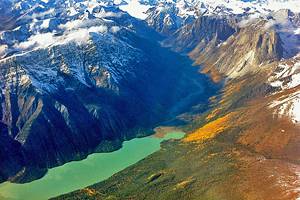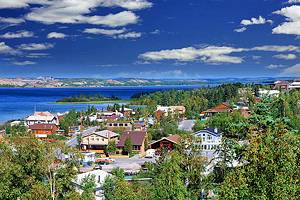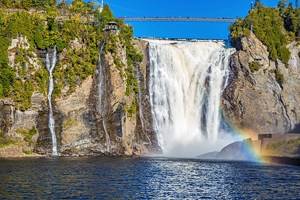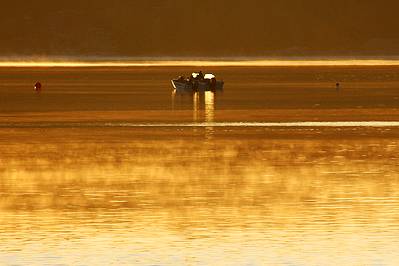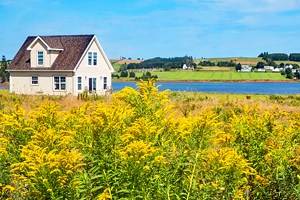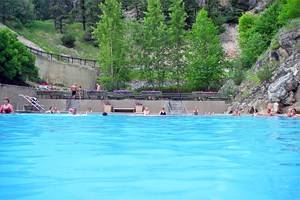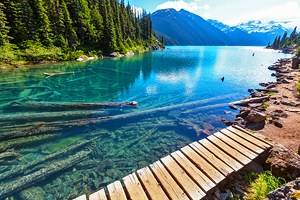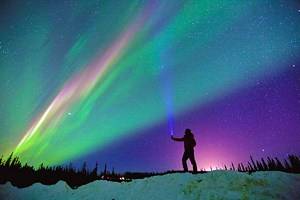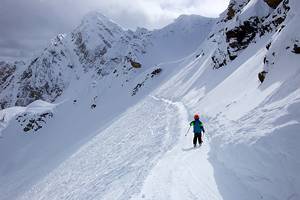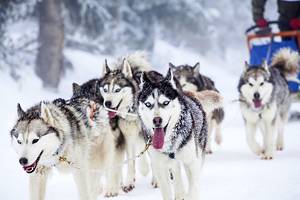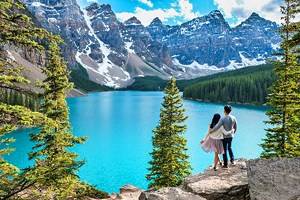Great Slave Lake: Things to Do
Covered by ice for eight months of the year, Great Slave Lake is the fifth largest lake in North America and the 10th largest lake in the world. This body of water, in the Northwest Territories, is part of the Mackenzie River System, and reaches more than 615 meters deep in places, a length of 480 kilometers east to west, and up to 110 kilometers across.
The lake gets its name from the Slavey First Nations people who have long lived on its shores. Samuel Hearne came across the lake in 1771. He was followed by Alexander Mackenzie heading for the mouth of the Mackenzie River - later named after him, and then by John Franklin.

Gold prospectors who passed here on the way to the Klondike in 1896-99 reported on the region's beauty, but nobody wanted to come here. It was not until 1930, when pitchblende was discovered on the lakeshore, that people became interested in the area.
The discovery of gold on Yellowknife Bay, four years later, led to a boom in Yellowknife, the main community on Great Slave Lake, along with Hay River, Fort Resolution, Fort Providence, and Behchoko.
Today, people come to Great Slave Lake for the multitude of recreational opportunities, particularly fishing. The area is also home to one of Canada's newest national park reserves. See our list for more details on things to see and do around Great Slave Lake.
Go Fishing on Great Slave Lake

Great Slave Lake is famous among anglers for its excellent trout and pike fishing, with its tributaries known for plenty of Arctic grayling. One species that many anglers may have never heard of but will enjoy catching is the inconnu, a large member of the whitefish family.
The primary fishing areas are the East and North Arms. These areas are remote, and access is primarily via float plane. Accommodation is at fishing lodges that range from basic right through to luxurious.
During the peak summer season, the sun sets for only a short period each day, so you can literally fish for 24 hours straight.
Explore Thaidene Nene National Park Reserve

One of Canada's newest National Parks, Thaidene Nene National Park Reserve is located in the East Arm of Great Slave Lake.
The park is a wonderland of wilderness, with rivers, lakes, and two-billion-year-old rocks. The best way to experience the park, apart from a flightseeing tour, is to set out in a canoe.
Camping is wherever you want: a sandy beach, rocky outcrop, or on a soft bed of pine needles under a forest of evergreen trees.
No roads lead to the park, so you need to fly, paddle, or boat in. A luxury lodge, Frontier Fishing Lodge, operates in the park.
Official site: https://www.pc.gc.ca/en/pn-np/nt/thaidene-nene
Experience the Northern Lights

On many people's bucket list is experiencing the northern lights. Late summer in Great Slave Lake is one of the best places and times to try and catch the northern lights. The days are still long and warm, and you may have the rare chance to combine a lingering sunset with early evening northern lights.
Being out in the wilderness, with no one else around, watching the skies above you erupt with a kaleidoscope of dancing colors is something that has to be experienced firsthand to be understood.
The northern lights start to appear in August and run right through until May.
Go Sailing

The sheer size and depth of Great Slave Lake make it an ideal place for sailing.
Most sailors tend to stay close to Yellowknife and participate in regular regattas. However, should you wish to venture further afield, your options are almost limitless. This is not for the faint of heart - the water is cold, storms can blow up quickly, and the situation can get serious fast.
Most multi-day excursions head to the East Arm, where the rocky scenery is quite spectacular. If you don't have your own boat, don't despair, many captains are looking for crew.
Visit the Bison Sanctuary

The Mackenzie Bison Sanctuary lies north of Fort Providence on Highway 3 in the direction of Behchoko. In 1963, the Canadian Government transferred 19 wood buffalo here, a species threatened with extinction.
The sanctuary runs for 80 kilometers once you pass over the McKenzie River crossing on Highway 3. These massive animals consider the highway part of their wandering territory, so be sure to keep a keen eye out, especially in the early morning or evening.
Try Birding

The immense wetlands along the southern shore of Great Slave Lake are home to countless migrating birds. Well over 200 species have been documented in and around the lake.
The shallow waters and swampy areas coupled with the mix of boreal forest and lowlands attract a unique mix of avian arrivals each spring and summer. Ideal nesting conditions coupled with an endless supply of bugs allow for great mating and reproduction success.
You may be surprised to find colorful western tanagers and rare whistling swans. More common aquatic birds include loons, with their haunting call; grebes; and mergansers. You will most certainly be serenaded non-stop by the ubiquitous white-throated-sparrow.
Soaring above the lake on the hunt for an unsuspecting fish are bald eagles and osprey.
Visit Fort Providence

The little town of Fort Providence is near the massive Deh Cho Bridge that spans the Mackenzie River just up from where it flows into the southwestern corner of Great Slave Lake. The town is known for the wide selection of First Nations arts and crafts, handmade anoraks, and parkas. Boats can be rented at the filling stations in the town.
The famous American Arctic explorer Sir John Franklin (1786-1847) chose Fort Providence as the starting point for his journeys of discovery to the Barren Grounds in 1819-22. The town has a beautiful white church, Our Lady of Providence RC Mission
At the western end of town stands a memorial to the American explorer Sir Alexander Mackenzie, who stopped off in Fort Providence in 1789 in the course of his putative trek to the Pacific Ocean, which he hoped would take him to the Arctic Ocean.
Tour the Historic Sites at Fort Resolution

Fort Resolution was built by the Hudson's Bay Company on Moose Deer Island in 1819, and transferred to its present site around 1822. It was an important center, with light freighters bringing goods from Fort McMurray up the Slave River. The trading post lies southwest of the main estuary of Slave River. Fort Resolution is the oldest town in the Northwest Territories.
For a surreal experience, be sure to stop in at the abandoned mining town of Pine Point. You'll see Mother Nature hard at work converting what was at one time the largest mining town in the north, back to its original state.
This is the closest town to the northern end of Wood Buffalo National Park. Just northwest of town is the massive Snake River delta.


